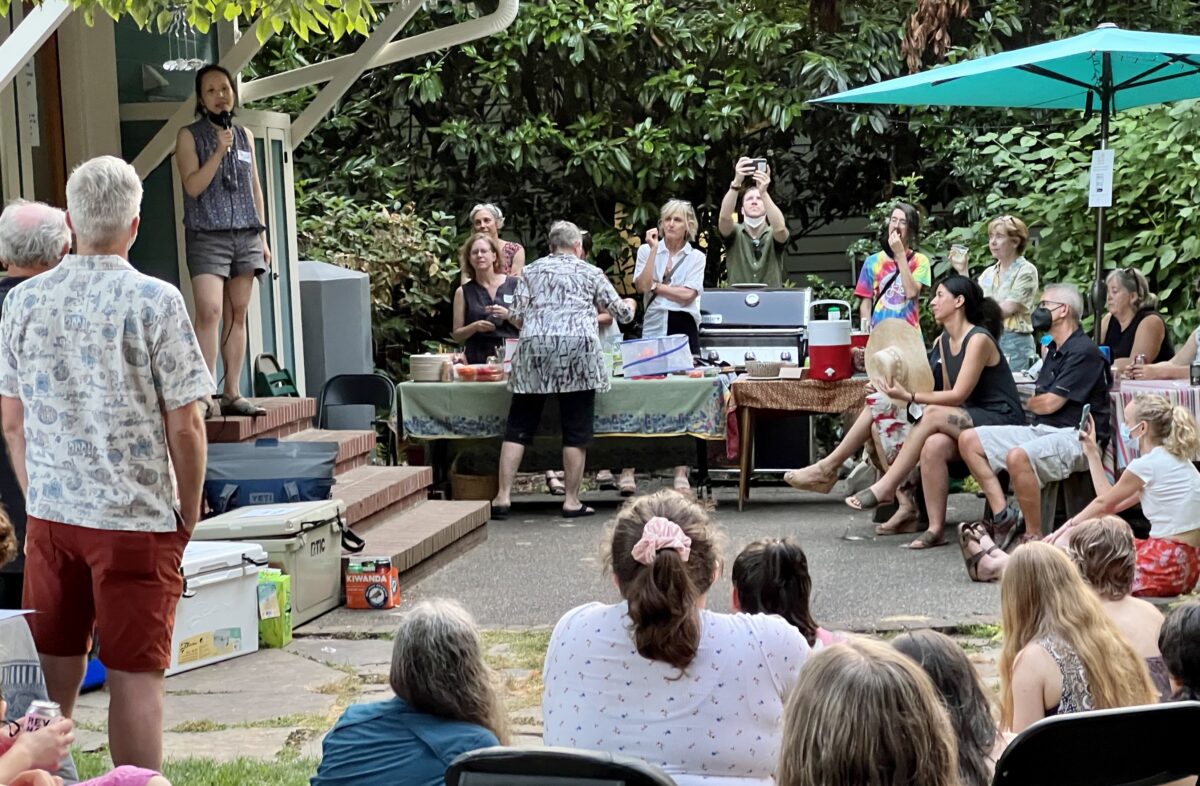
There’s one vital ingredient needed to influence the debate around a multi-billion dollar effort to expand I-5 between Portland and Vancouver: Money.
Last night in a shaded backyard in the Creston-Kenilworth neighborhood, well over 100 people gathered for a house party that raised thousands of dollars for the Just Crossing Alliance, an upstart coalition of advocacy groups that have united to change the trajectory of the Interstate Bridge Replacement Program.
Now that the project’s Locally Preferred Alternative has been endorsed and the project is moving into its financial and environmental assessment and design phase, interest groups on all sides see this as a crucial moment to retrench, build power, and prep for the next phase of the fight.
Last night was a strong show of force for the coalition as they embark on the massive task of competing with the million-dollar marketing budget of the project team in a bid to prevent the Oregon Department of Transportation from spending billions on a project they say won’t solve the problems we face.
Among the crowd was a whos-who of activists, planners, elected officials, and freeway fighters — many of whom were around a decade ago to fight the previous iteration of this project, the Columbia River Crossing.
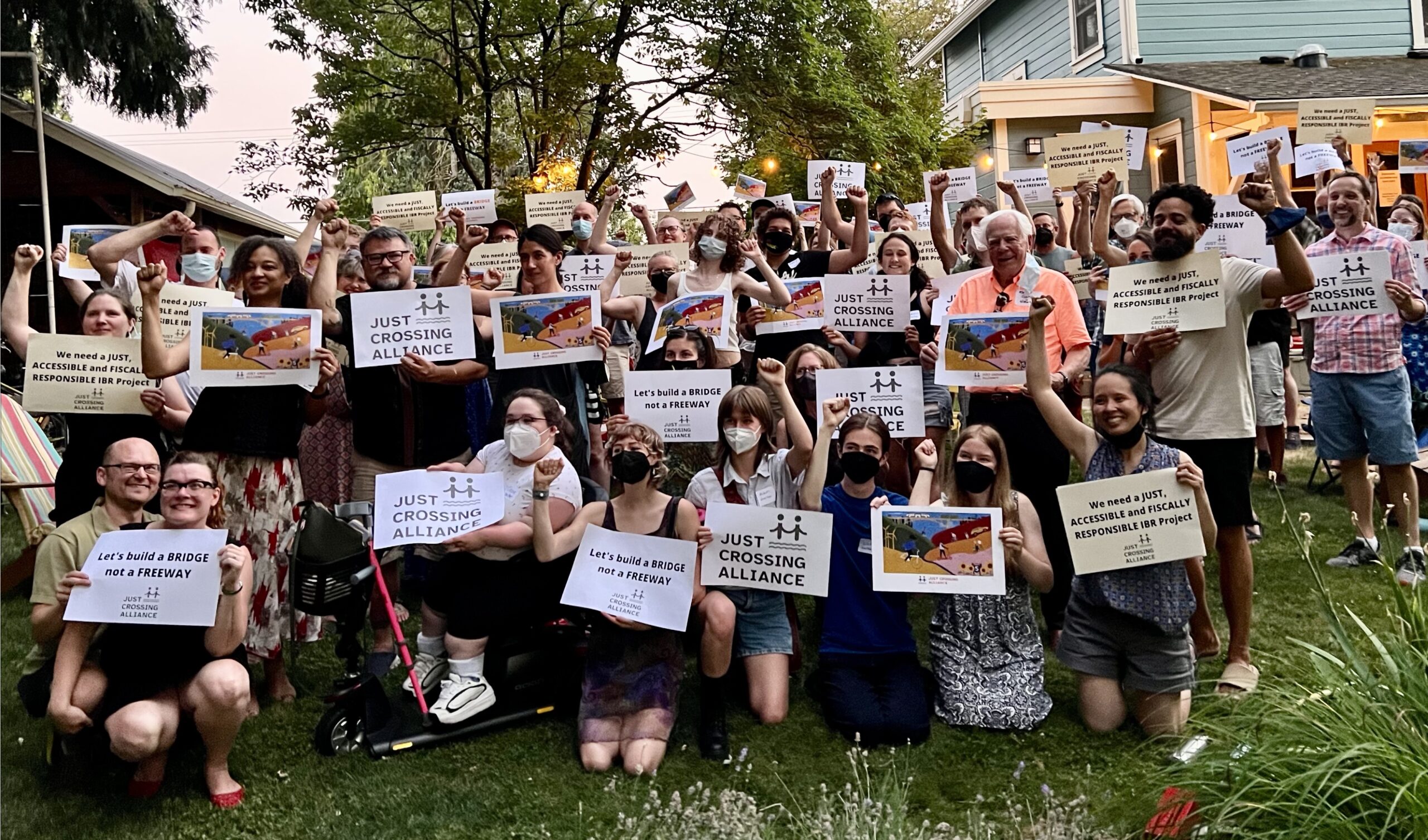
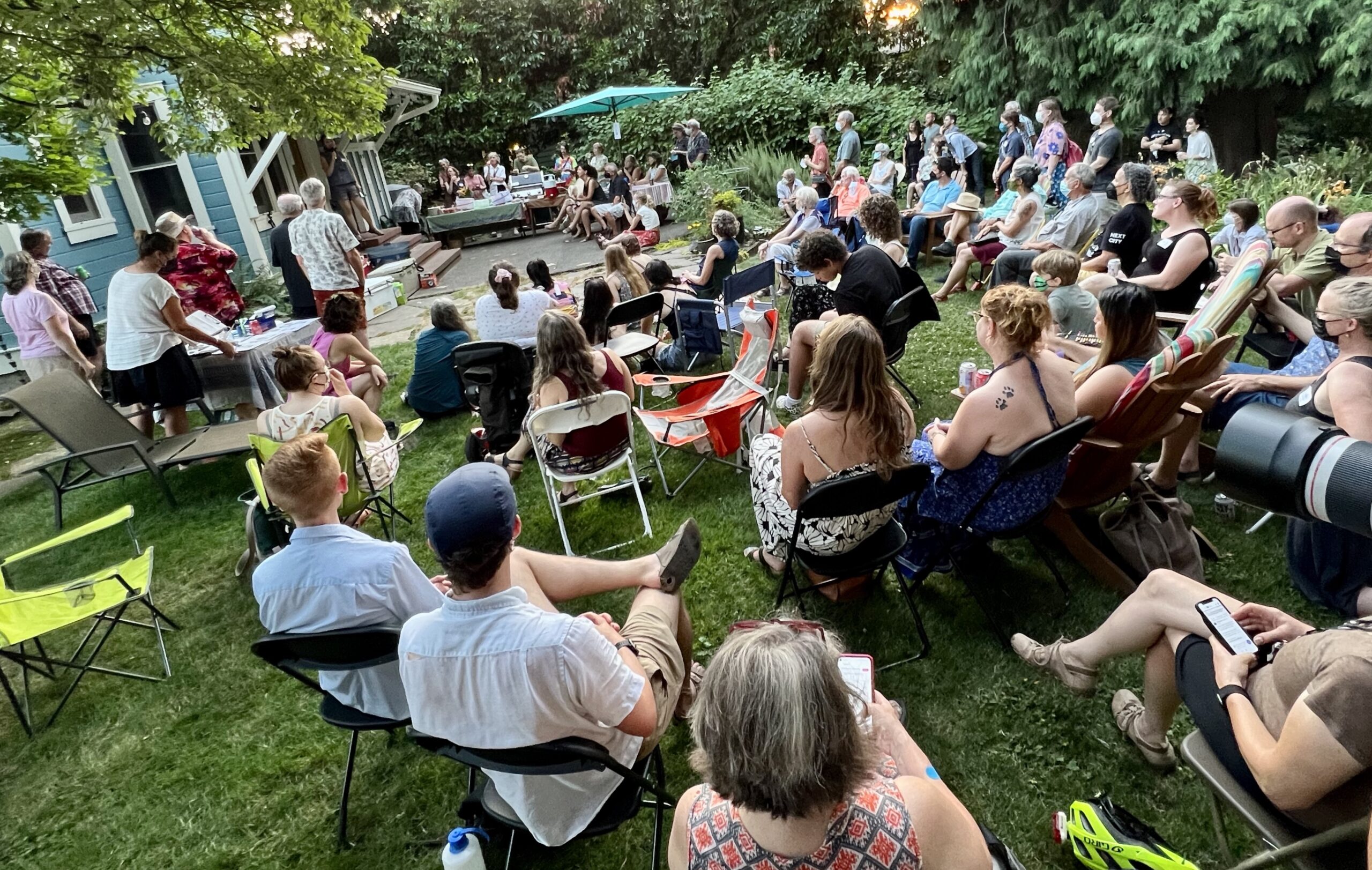
One of them was Mara Gross who fought the CRC as a staffer with Coalition for A Livable future. “I am sad to say that the same issues we saw back then are still at play today,” Gross said, as the first of several speakers aimed at riling up the crowd. “It’s still a mega-freeway expansion over the river. It’s still seven freeway interchanges over five miles.”
Just Crossing Alliance isn’t looking to kill this project, they just want to make it better. And that means smaller. Smaller footprint, smaller budget, smaller impact on the earth and people who live around the project.
Oregon State Representative Khanh Pham sits on the Joint Legislative Committee on the I-5 Bridge and has been an outspoken critic of the IBR project. She and many others are worried about the financial commitment required to build the currently proposed design, and how that investment will rob more pressing priorities like fixing urban arterials. Last night she said:
“ODOT keeps telling us, ‘I’m sorry, but we just don’t have the money to be making these critical investments in your street. And so you’re just going to have to accept that, every year, another community member is going to die trying to cross the street or riding their bicycle.’
And, you know, I now see as a legislator, that in fact, the money is available. It’s just being used on other priorities.”
In the 18 months Rep. Pham has been in office she’s learned that if she wants to make good on her activism credentials and continue to speak her truths to power in Salem, she needs support. “I am only as powerful as the grassroots community that’s behind me,” she told the crowd. “I need you to back me up and show that this legislator is not just a renegade, spouting off on her own… we really need to show that there is a growing and mass movement behind this this effort.”
Pham then looked in the crowd toward Metro Councilor Mary Nolan (who I believe referred to Pham as a “sister”) and led a loud round of applause for the “courage and conviction” of her recent lone “no” vote against the LPA.
The turnout and enthusiasm last night will buoy the spirits of advocates and will act as salve for their wounds after the project was almost unanimously approved by local governments. They’ll need the boost as the project moves into the next phase of the process.
The next big debate is likely to center around a new cost estimate that the IBR team has said will be released in November. Currently estimated at $5 billion, the new number is likely to be much higher. And next session at the Oregon Legislature, lawmakers will be asked to make a down payment on the project.
Just Crossing Alliance backers hope the payments they pledged last night will give those politicians pause.


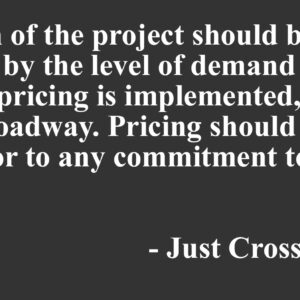

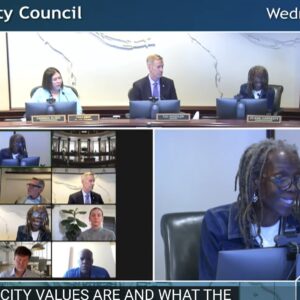

Thanks for reading.
BikePortland has served this community with independent community journalism since 2005. We rely on subscriptions from readers like you to survive. Your financial support is vital in keeping this valuable resource alive and well.
Please subscribe today to strengthen and expand our work.
I consider myself as a part of the people against the LPA, but can’t help but feel like we would have more people on our side if we actually had a sound, drawn out, alternative design that we were advocating for. For those who don’t currently have an opinion, they’ll look at the two sides, one is complete, and oh cool, it has light rail. While the other side is against it, but doesn’t have any alternative plan to offer.
It appears to me that there are two alternative plans; 1) more lanes than the LPA, and 2) less lanes than the LPA (no more capacity). The Just Crossing Alliance, who I support, avoided taking a hard stand on the “less lanes” alternative. It was almost like they were hoping that somehow the IRB would simply go away (I was). I am hoping that the open house is the beginning of a more focused “no more capacity” argument.
There was a well-thought-out plan called the Common Sense Alternative II which replaces the bridge and the Hayden island interchange only: https://www.aortarail.org/site/assets/files/13735/common_sense_alternative_ii_3_2021-05-28.pdf
Bikeportland wrote about the previously alternative back in 2011, at that time it was suggested to upgrade the existing bridges, fix the railway bridge to eliminate 90% of bridge lifts, and then build a new pedestrian/bike/LRT/bus bridge.
https://bikeportland.org/2011/04/27/video-explains-common-sense-alternative-to-crc-project-52147
Either option would be cheaper and better, but would not achieve ODOT/WADOT goals of an expensive widening of the freeway through North Portland and Vancouver.
One key question is what you’re considering the issue.
That is, if one says the question is “What do we do with the I-5 area”? then you’re already in the mindset that that’s the question. Certainly the Common-Sense Alternative is a decent response to that.
But that’s the wrong question.
The issue I pose to supporters of the LPA is “If you had five (or more) billion dollars to improve transportation in the region, how would you spend it?”
I’ve never had a single person say, “I would spend it all on this one project.”
My alternative plan is to:
One can do ALL of that for the cost of this one project.
As the lone NO vote on the Governors’ I-5 Task Force 20 years ago, I was sorry to have missed last night’s event. I applaud all who continue to take ODOT to task for its deceptive and destructive “Columbia River bridge project.” Not even Hitler dared push freeways (“Autobahns”) through the heart of German cities. It’s time to do the fiscally prudent thing…move “I-5” signs to I-205, and decommission I-5 through Portland, Marquam bridge and all.
Honest question—if they are advocating for no increase in capacity, then why have replacement project at all? Is their intent only to update the existing older bridge and add earthquake resiliency?
This is an important question for the Just Crossing Alliance. Any new bridge will be enormous, costly, tolled, it won’t alleviate the congestion, it will take a decade to complete, and that’s IF the project doesn’t fall apart under the weight of political complexity and cost.
Under a much shorter time period, variable and equitable congestion pricing could be implemented on the 5 and 205- with no cement. It is the only known way to reduce congestion and, if implemented correctly, is a more equitable way to tackle the issues of economic, racial, and climate injustice behind the current crossings. Politically inconceivable? Well, either way DOT has to sell tolls and this solution actually addresses congestion – the supposed #1 driver for the Interstate Bridge Replacement Project.
Often sited regional seismic concerns are barely going to be addressed by replacing the current bridges and the “big subduction-zone quake” could happen 250 years from now…. on an uninhabitable planet.
I would love to be part of grassroots endeavor to do things better around this stretch of urban freeway, which has a horrible racist history and toxic legacy. I also think a “just crossing” will not happen by replacing functional bridges.
Rooting for the the Just Crossing Alliance,
Dan Kaufman